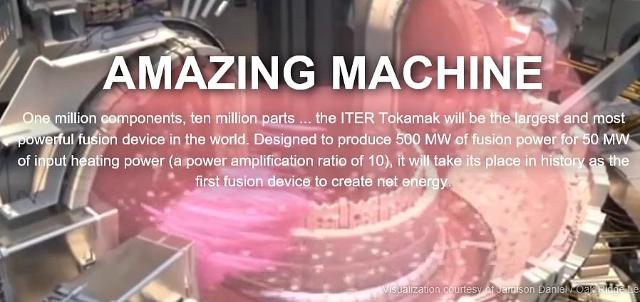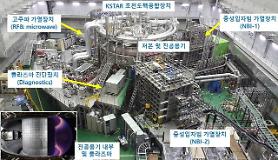
An image captured from the website of the ITER Organization [Courtesy of the ITER Organization ]
SEOUL -- South Korea has produced the first blanket shield block for a fusion reactor to be built in France under an international project to provide mankind with a limitless energy source. Plasma experiments are to begin in 2025 and full deuterium-tritium fusion experiments in 2035.
The International Thermonuclear Experimental Reactor (ITER) will be built in Cadarache, France. Seven countries including South Korea, the United States, China and EU members have been involved in the ITER project.
The plasma-facing surface of the ITER blanket is attached to shield blocks that provide neutron shielding. Cooling water will run to and from the shield blocks through manifolds and branch pipes to remove the high heat load expected during ITER operation. A total of 440 blanket modules cover the inner walls of the vacuum vessel to protect the steel structure and the superconducting toroidal field magnets from the heat and high-energy neutrons.
The National Fusion Research Institute (NFRI) in South Korea is responsible for the production of 220 shield blocks. Each shield block needs 220 drills to create a coolant passage, and for the smooth flow of coolant, a 1.4 m long hole must be drilled through with just one single drill. Performance tests have been completed under high and high vacuum conditions similar to the actual ITER operating environment, the institute said.
ITER experiments will take place inside a hermetically sealed steel container that acts as a first safety containment barrier. In its doughnut-shaped chamber, plasma particles spiral around continuously without touching the walls. The vacuum vessel provides a high-vacuum environment, improves radiation shielding and plasma stability, and acts as the primary confinement barrier for radioactivity.
Fusion power, generated by nuclear fusion, has long been spotlighted as a safe next-generation power source capable of reducing radioactivity. However, commercialization has a long way to go because it's extremely difficult to produce a state of controlled fusion. A tokamak to be housed in a seven-story structure in reinforced concrete is an experimental machine designed to harness the energy of fusion.
Copyright ⓒ Aju Press All rights reserved.



